Last Updated on June 30, 2025 by Packoi Team
Thermochromic inks have special liquid crystals or dyes. They change color when the temperature changes. Their dynamic nature makes them popular in various fields, such as packaging, security printing, and textiles. These inks make products look better and more useful. They add an interactive, eye-catching touch.
Here are some benefits of thermochromic ink and how it works. We also cover its applications and future potential in different industries.
What is Thermochromic Ink?
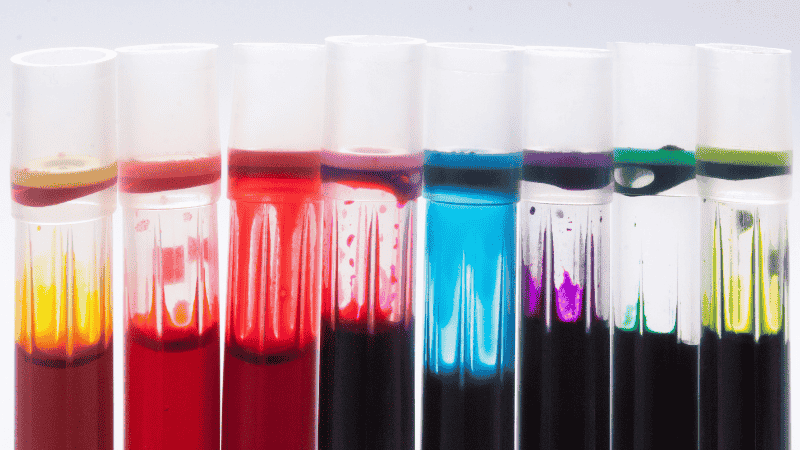
Thermochromic ink contains liquid crystals or dyes. These change color when the temperature changes. These organic compounds undergo structural changes at specific temperatures, triggering the color transformation.
Thermochromic ink first appeared in the 1970s. It was mainly used in novelty items like mood rings and thermometers. With better technology and more durable ink, its use has grown in many industries.
Thermochromic ink is used in several industries. Besides the packaging and printing industry, it is also found in automotive, food and beverage, cosmetics, and healthcare. In the medical field, it is used in temperature-sensitive patches and labels to monitor body temperature. In the food industry, it is used to indicate the ideal temperature for serving beverages or foods.
Thermochromic liquid crystals are great for screen printing. They help make fun promotional items like t-shirts and mugs. These items change color when they get warm.
How Thermochromic Ink Works?
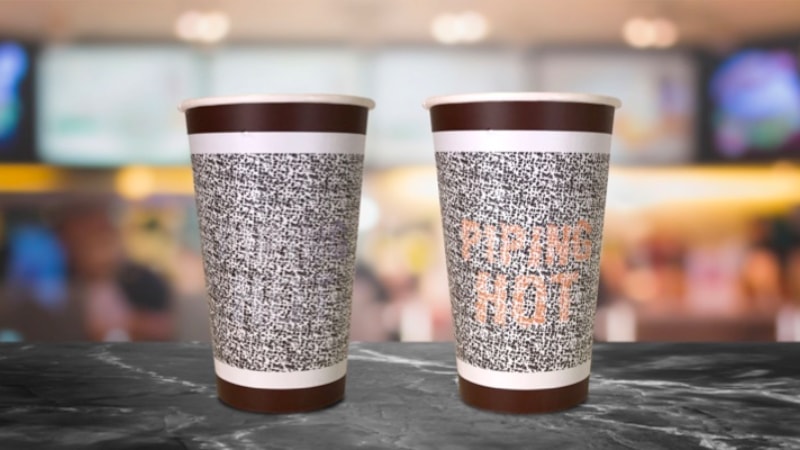
Thermochromic ink works by adjusting to external changes. This helps maintain balance. When exposed to heat, its molecular structure shifts, causing a visible color transformation. The new molecular arrangement absorbs and reflects light differently. As a result, the observed color is also different from the original one.
Researchers are developing new ink formulations. These improvements aim to boost durability and color accuracy. They also extend the temperature range for ink usage. This opens up even more possibilities for how these inks can be applied.
There are two types of thermochromic ink: reversible and irreversible. Reversible thermochromic ink goes back to its original color when it cools down. In contrast, irreversible ink stays permanently changed. The color change temperature can also vary depending on the composition of the ink.
Besides thermochromic liquid crystals, leuco dyes are also commonly used in thermochromic ink. These dyes undergo a chemical reaction when exposed to heat, resulting in a color change. The basic thermochromic properties of these dyes are the same as their crystal counterparts.
Applications of Thermochromic Ink
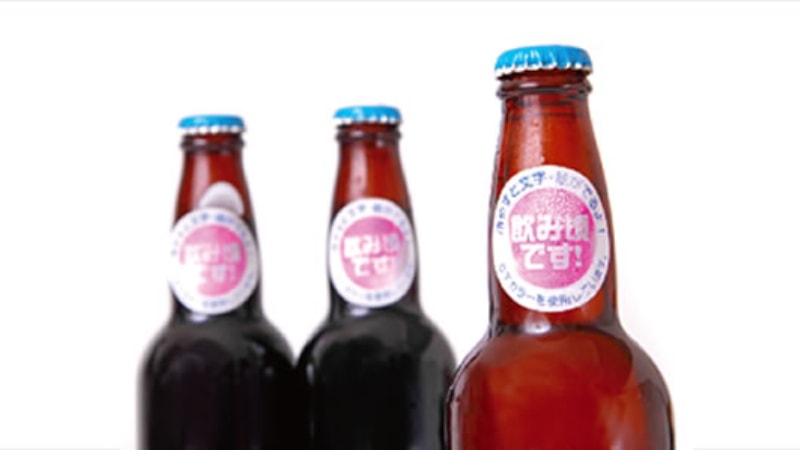
Thermochromic ink has a number of applications in different industries. Some of them are as follows.
- Packaging: In the food and beverage industry, thermochromic ink shows when a product hits a specific temperature. For example, a color-changing label on a beer bottle could signify that the drink is chilled and ready to be consumed. Thermochromic ink can create unique color changes for brands. This makes products more eye-catching and interesting for consumers.
- Security: Thermochromic ink can add extra protection against counterfeiting in security printing. A banknote might have a hidden thermochromic feature. This feature shows up only when rubbed or heated. This makes it hard for forgers to copy. Anti-tampering labels can use thermochromic ink. This ink shows if a product has been tampered with or exposed to high heat during shipping.
- Marketing and Promotions: Brands use thermochromic ink in marketing materials to grab consumer attention. Color-changing t-shirts, business cards, and advertisements are just a few examples.
- Consumer Goods: Clothing, toys, and home decor can use thermochromic ink. This adds visual appeal. Mood rings and color-changing nail polish are popular examples of this.
- Pharmaceuticals: The pharmaceutical industry uses thermochromic ink for temperature-sensitive labels. These labels help ensure drugs are stored correctly. It keeps medications at the right temperature during storage and transport. This helps maintain their effectiveness.
- Medical Applications: Thermochromic ink may be used in medicine. For example, temperature-sensitive bandages can change color. This change can show if there is an infection or how well a wound is healing.
The Role of Body Heat in Thermochromic Ink
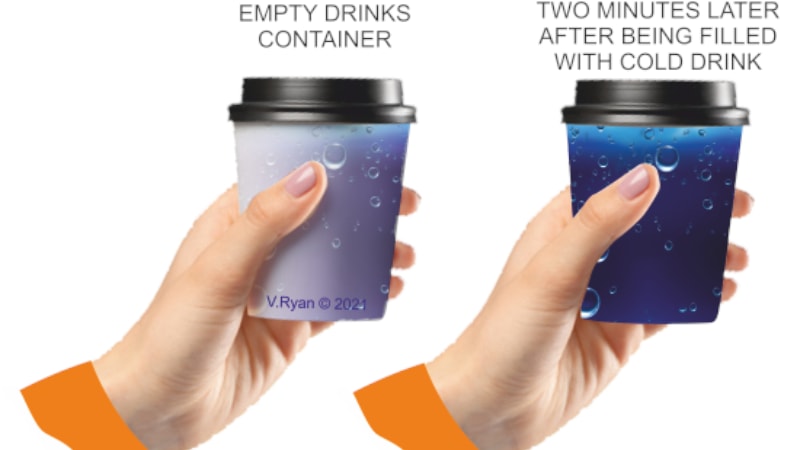
The most common thermochromic ink is made from liquid crystals. These inks change color when the temperature goes up or down. Thus, the body heat of a person is an important factor in activating the color-changing properties of the ink.
When this type of ink is applied to a material, such as paper or fabric, it remains in a solid state at room temperature. When body heat, usually about 98.6°F (37°C), is applied, the ink molecules change their orientation. This rearrangement causes the color to change.
The amount of body heat required for the color change may vary depending on the specific ink used. Some inks may require a higher temperature, while others may change color at lower temperatures.
A good example is the mood ring. It uses thermochromic ink to change color with your body temperature. The colors show various moods and emotions. This makes it a fun and unique accessory. The color orange shows warmth and happiness. In contrast, blue represents coolness and relaxation.
Benefits of Using Thermochromic Ink
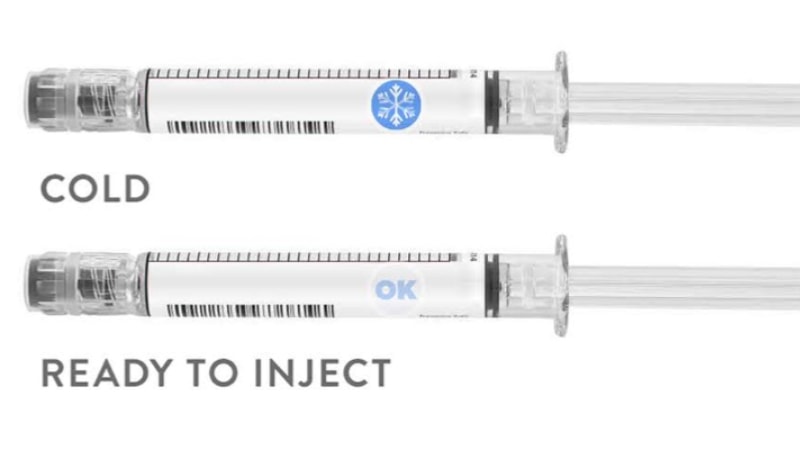
Thermochromic ink has a ton of benefits, both for practical and novelty purposes. Some of these benefits include:
- Interactive Experience: Nowadays, customers want something unique from your brand. If you’re just offering the same old packaging, they may lose interest. Using thermochromic ink creates an interactive experience. It engages their senses and captures their attention.
- Brand Awareness and Innovation: As you may have guessed, using thermochromic ink is a great way to stand out from competitors. Creative packaging and labeling boost brand awareness and make a strong impression on customers.
- Temperature-Sensitive Warnings: Thermochromic ink is not just for fun or novelty purposes. It can also serve as a useful warning for potentially harmful substances. For example, thermochromic ink works in baby products. It can show if a liquid in bottles or toys is too hot for a child.
- Enhanced Security Features: Thermochromic ink not only changes color but also offers security features. For example, some banknotes use this ink to indicate if they are genuine or not. So, it’s a popular choice for anti-counterfeit measures.
- Shelf-Life Monitoring: Thermochromic ink shows if temperature-sensitive products face extreme heat or cold while being transported or stored. It helps consumers know if the product is still safe to use.
Emerging Trends in Thermochromic Ink Technology
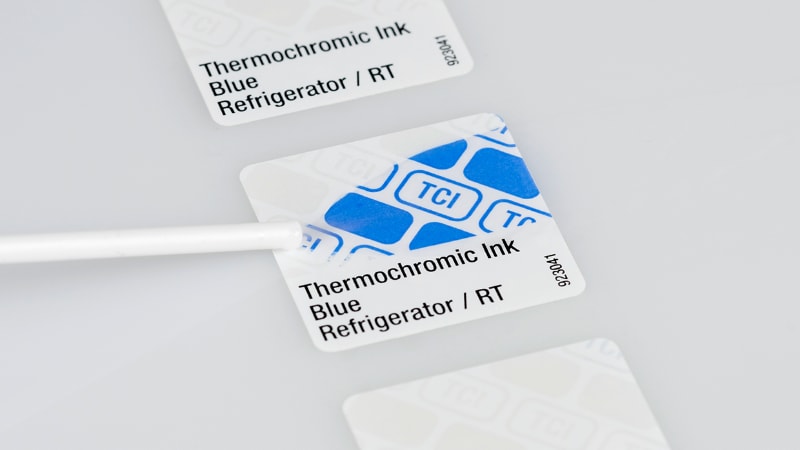
Thermochromic ink has come a long way since it was first introduced. It keeps evolving with new technology. One advancement is reversible thermochromic ink. It changes color when heated and goes back to its original color when cooled.
Liquid crystal molecules are used in thermochromic ink. This enables precise color changes at certain temperatures. Thermochromic ink is mixed with UV light and other chemicals. This creates more complex color-changing effects.
The following table highlights some of the emerging trends in thermochromic ink technology.
| Emerging Trend | Use Cases |
|---|---|
| Reversible Thermochromic Ink | Used in beverage packaging to indicate optimal drinking temperature |
| Liquid Crystal-Based Thermochromic Ink | Applied in medical thermometers for precise temperature readings |
| UV-Activated Thermochromic Ink | Integrated into security labels to enhance anti-counterfeiting measures |
| Multi-Stage Color Change Ink | Used in time-temperature indicators for perishable goods and pharmaceuticals |
| Heat-Sensitive Smart Fabrics | Employed in fashion and sportswear for dynamic color-changing designs |
| Dual-Responsive Ink (Heat + Light) | Applied in smart labels for interactive product authentication |
| Conductive Thermochromic Ink | Integrated into electronics for real-time heat monitoring in circuits |
| Photochromic-Thermochromic Hybrid Ink | Used in novelty items that change color with both light and temperature |
Conclusion
Thermochromic ink is redefining how we experience color and temperature. From enhancing security features to improving medical simulations, its adaptability spans across industries.
Thermochromic ink is ready to open up new creative and practical uses as innovation advances. We can expect smarter and more efficient uses of technology and design. These advancements will provide dynamic solutions for consumers and businesses.
Amp Up Your Packaging Design With Thermochromic Ink
Planning to use thermochromic ink in your packaging? You need a packaging supplier like Packoi to innovate with confidence. Get in touch to explore the possibilities of incorporating this technology into your packaging design.




